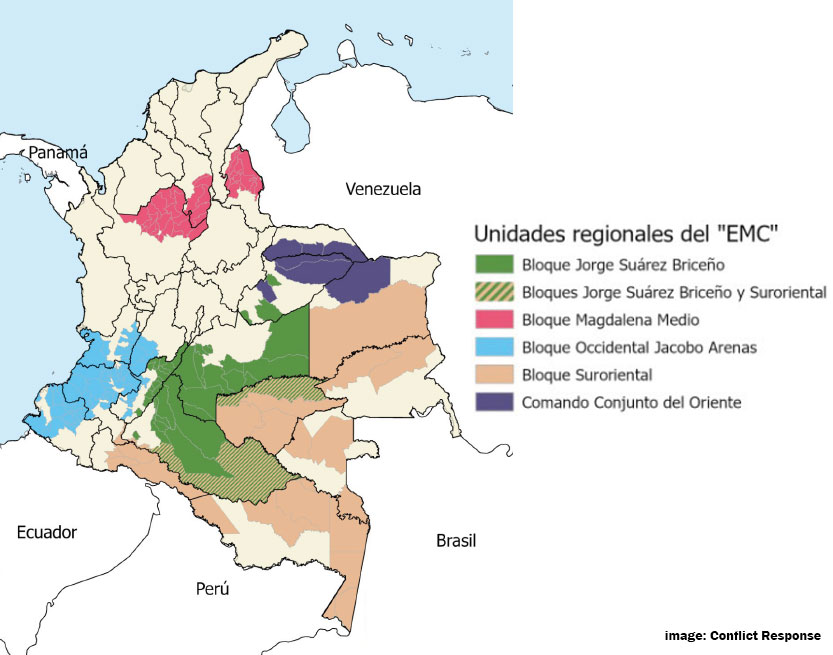Multiple regional divisions of the EMC split with the guerrilla organization in order to pursue peace talks with the government of President Gustavo Petro.
The split could escalate violence in southern Colombia where two EMC divisions share control, but disagree over whether or not to engage with the government, analyst Kyle Johnson of the think tank Conflict Response told Colombia Reports.
Listen to the full interview here
Furthermore, the government is expected to suspend a ceasefire with the guerrillas in regions where EMC divisions that do not take part in peace talks operate.
How and where the EMC operates
Following their split from the now-defunct insurgent organization FARC, the EMC initially organized five regional divisions.
These divisions operate relatively autonomously, except in parts of Guaviare and Caqueta where the Bloque Jorge Suarez Briceño and the Bloque Suroriental exercise joint control over local communities and the economy.
According to Johnson, unity in the EMC began falling apart earlier this year after Petro ordered a suspension of the ceasefire with the guerrillas in southwest Colombia.
The president took this decision after an attack by members of the Bloque Occidental on an indigenous community, which killed one indigenous leader in the Cauca province.
Petro ordered the suspension while the EMC’s top commanders were meeting in Cauca to decide if they wanted to continue with the peace talks or abandon the process altogether, said the conflict analyst.
The resumed military attacks forced the guerrilla commanders to return to their respective regions to avoid getting caught up in the fighting between the army and the Bloque Occidental.
This also ended the unity among EMC divisions as some commanders wanted to pursue peace while others refused to talk to the government without a ceasefire.
How the organization is divided
In a press statement made on Tuesday, government negotiator Camilo Gonzalez said that peace talks with most of the EMC’s regional divisions were “frozen” because of their refusal to talk without a ceasefire in southwest Colombia.
The table will continue with the Bloques [Jorge Suarez] Briceño, Magdalena Medio, including Catatumbo and part of Antioquia and southern Bolivar. Conversations with the other blocs are currently frozen.”
Government negotiator Camilo Gonzalez
Gonzalez said that the government will probably resume fighting with the guerrillas, including EMC chief “Ivan Mordisco,” in regions where division commanders refuse to negotiate peace.
The EMC kinda organizes into regional blocs, right? The upside is that it makes it a little easier to follow… Basically, you have two blocs who are going to be at the table. The first is the Magdalena Medio Bloc, which… is led by “John Mechas,” who was kinda famous for ordering the attack on [former President Ivan] Duque’s helicopter in Cucuta a few years back.
Analyst Kyle Johnson
The Magdalena Medio Bloc team will be led by Andrey Avendaño, who was the EMC’s peace negotiator early on in the talks.
From the southern divisions, only “Calarca” and “Cipriano Cortez” of the Jorge Briceño Suarez Bloc have agreed to continue talks under the current conditions.
Their participation could cause violence with Mordisco and the Southeastern Bloc, which has joint control over territories in the Guaviare and Caqueta provinces.
Violence between guerrillas in the rest of Colombia is unlikely because of their relatively strict regional divisions.
The government negotiator left the door open for other EMC divisions to rejoin the talks that could become easier without the violent resistance of guerrilla hardliners.



